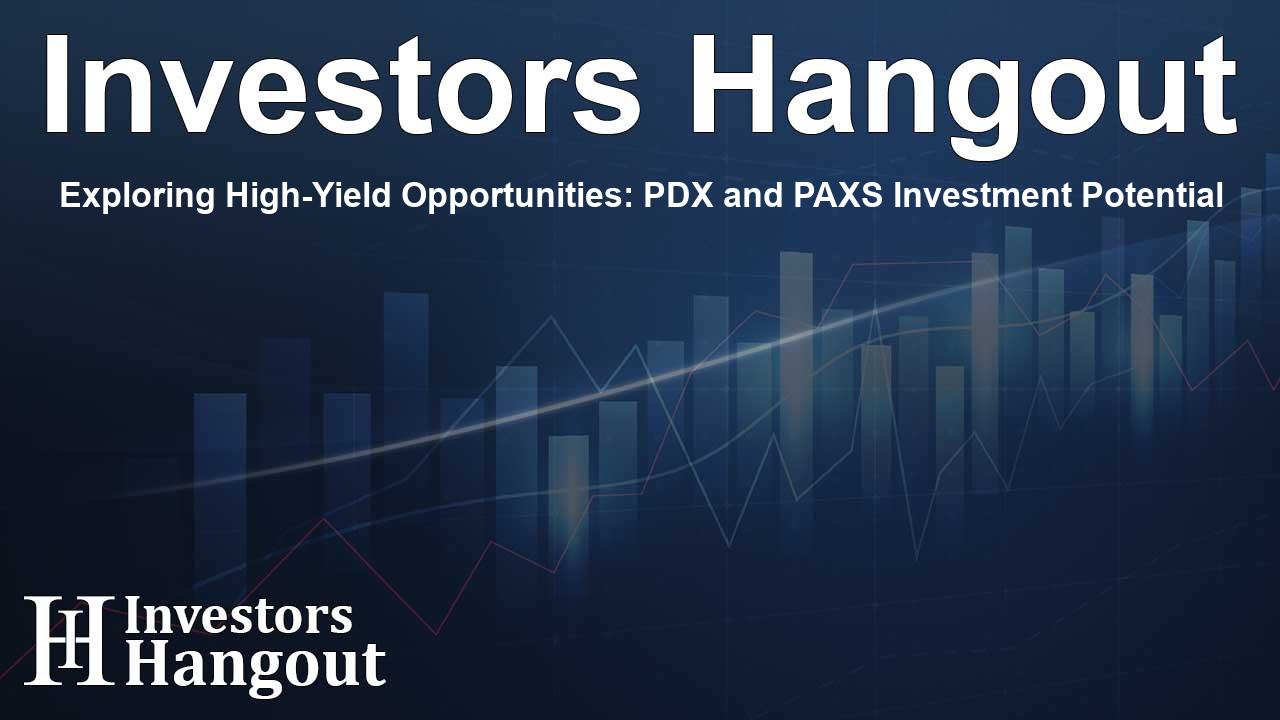Exploring High-Yield Opportunities: PDX and PAXS Investment Potential

Investment Landscape: Embracing Opportunity
Reflect on the market's recent journey, transitioning from a phase of uncertainty known as the 'tariff terror' to a renewed period of growth where stocks are reaching exciting new heights. Despite the positive momentum, there remain compelling opportunities, particularly among corporate-bond closed-end funds (CEFs) that continue to offer appealing yields.
As we dive deeper into the world of CEFs, we turn our attention to two particular funds that stand out due to their undervaluation: the PIMCO Dynamic Income Strategy Fund (NYSE: PDX) and the PIMCO Access Income Fund (NYSE: PAXS). Both offering yields above 9%, these funds capture the interest of income-focused investors.
In light of recent shifts in the market, understanding the performance and trends of these funds is paramount. Since mid-April, the average total return of PDX and PAXS has approached an impressive 12%, though the growth has favored PDX significantly.
Diving into Dividends: Why Yields Matter
Let's discuss dividends, a primary reason many investors are drawn to CEFs. If you had invested in these two funds back in April, your average yield would have been about 10.1%. The disparity in yields is notable, with PAXS offering over 12% at that time. Interestingly, as their market prices have risen, the average yield has dipped. Yet PAXS maintains a strong income potential due to its price movements.
This brings forth an essential lesson in CEF investments: often, higher-yielding funds do not guarantee superior short-term performance. The fear surrounding larger yields tends to deter investors, despite many CEFs providing solid returns for years without substantial cuts to payouts. Often, CEFs with lower yields bounce back more robustly after market downturns, a trend exemplified by PDX's outperformance.
Understanding NAV: A Key Indicator
Net Asset Value (NAV) serves as a critical gauge of a CEF's performance. Given fixed share counts, NAV and market prices can diverge, leading to attractive buying opportunities when market prices fall below NAV. This discount is particularly appealing to CEF investors, as opportunities for profit arise when the market eventually corrects these discrepancies.
Comparing Portfolios: PDX vs. PAXS
Over the last year, both PDX and PAXS have delivered comparable total NAV returns, although PDX has slightly outperformed due to its strategic focus on energy assets and floating-rate credits. Nevertheless, both funds exhibit robust prospects for continued recovery, driven by their current discounts to NAV.
At present, both funds trade at discounts, with PDX’s substantial 7.1% markdown presenting it as the more attractive choice, even with a lower yield. The dynamics of the market suggest that PDX may yield a more significant total return compared to PAXS over time, particularly considering the current risk appetite among investors.
Future Outlook: Premium Possibilities
PAXS, with its leveraged-credit investments, is well-positioned to see its NAV increase in a thriving market. As investor interest surges, the fund could very well transition from a discount status to trading at a premium. This isn't just theoretical; PAXS had previously operated at a double-digit premium within the past year.
Historically, PIMCO funds have attracted a loyal investor base, leading to significant premiums due to their reputation for consistent performance. This scenario has the potential to unfold for both PDX and PAXS, as long-term investors can expect sustainable high payouts while waiting for those premiums to materialize.
The outlook remains bullish for these funds, not least because they are fundamentally supported by PIMCO's established brand. As investor confidence grows, the long-term prospects for PDX and PAXS appear increasingly rosy.
Frequently Asked Questions
What is the current yield for PDX and PAXS?
Currently, PDX and PAXS yield above 9%, with PAXS particularly noted for its continued yield near 12%.
How does market performance affect CEFs like PDX and PAXS?
Market performance impacts CEFs through changes in NAV, market prices, and investor sentiment, often leading to discrepancies between prices and underlying asset values.
What factors contribute to differences in NAV between the two funds?
Differences in NAV can be driven by the types of assets held, market conditions, and management strategies, especially as funds respond differently to market fluctuations.
Are PDX and PAXS expected to maintain their current discounts?
While they currently trade at discounts, the potential for increased investor interest may drive both funds toward trading at premiums in the future.
What should investors consider when choosing between PDX and PAXS?
Investors should evaluate the trade-offs between yields, discounts to NAV, and potential for portfolio performance, considering long-term recovery and income generation strategies.
About The Author
Contact Riley Hayes privately here. Or send an email with ATTN: Riley Hayes as the subject to contact@investorshangout.com.
About Investors Hangout
Investors Hangout is a leading online stock forum for financial discussion and learning, offering a wide range of free tools and resources. It draws in traders of all levels, who exchange market knowledge, investigate trading tactics, and keep an eye on industry developments in real time. Featuring financial articles, stock message boards, quotes, charts, company profiles, and live news updates. Through cooperative learning and a wealth of informational resources, it helps users from novices creating their first portfolios to experts honing their techniques. Join Investors Hangout today: https://investorshangout.com/
The content of this article is based on factual, publicly available information and does not represent legal, financial, or investment advice. Investors Hangout does not offer financial advice, and the author is not a licensed financial advisor. Consult a qualified advisor before making any financial or investment decisions based on this article. This article should not be considered advice to purchase, sell, or hold any securities or other investments. If any of the material provided here is inaccurate, please contact us for corrections.
